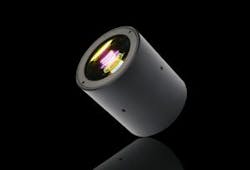- This article discusses an innovative F-theta lens design that incorporates a compensating element in front of the image to expand the field of view.
- The central focus of the project involves enhancing performance for low-energy laser applications through the utilization of a quartz design that capitalizes on the distinctive characteristics of the material.
- Through careful assembly, the F-theta lens ensures accurate spot convergence. Any testing hurdles are adeptly addressed through the implementation of compensatory measures and specific filters.
- There is a departure from tradition with the incorporation of a compensating element. The meticulous enhancements made to the design showcase a steadfast commitment to excellence in meeting customer demands.
Introduction
This article explores a groundbreaking F-theta lens design that diverges from conventional configurations by integrating a compensating element in front of the image to broaden the field of view. The primary objective of this project is to fulfill the unique requirements of the customer. Beginning with the initial version, we systematically refined and upgraded the lens to enhance its performance, particularly for laser applications.
Project Overview
The project’s core is optimizing performance for weak laser energy by implementing a quartz design that leverages the material’s unique attributes. It is important to note that our design differs from the conventional telecentric lens approach. We have clearly communicated this deviation to the customer, who has not expressed any objections.
